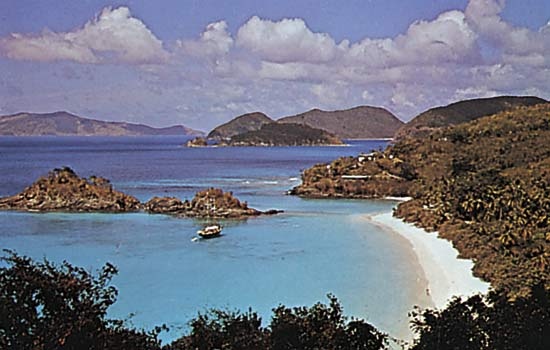Saint John
New Brunswick, Canada
largest city in New Brunswick, Canada, on the Bay of Fundy (Fundy, Bay of), at the mouth of the St. John River (Saint John River). The site, visited by the French explorer Samuel de Champlain (Champlain, Samuel de) in 1604 and fortified by Charles La Tour (La Tour, Charles) (1631–35), was occupied by the British in 1758 and refortified as Fort Frederick. The latter was destroyed by American revolutionaries in 1775 but was replaced by Fort Howe (1777–78), whose blockhouse has since been reconstructed. The settlement developed after 1783, when loyalists (loyalist) established Parr Town and Carleton around the harbour. In 1785 the two communities amalgamated as St. John (after the river) to become Canada's first incorporated city. Benedict Arnold (Arnold, Benedict), the American Revolutionary traitor, lived there (1787–91). During the War of 1812 (1812, War of), Martello Tower was built on Lancaster Heights for harbour defense; it is now a national historic site.
A year-round ice-free harbour fostered shipping, shipbuilding, and fishing; but economic growth was checked by a disastrous fire (1877) and a declining lumber trade. St. John recovered, absorbed the city of Portland in 1889, the city and parish of Lancaster and part of Simonds parish in 1966, and became the province's commercial, manufacturing, and transportation centre, with shipping facilities and one of the world's longest (1,050 feet 【320 m】) dry docks (dry dock). St. John's primacy, however, is being challenged by Moncton. Industries include lumbering, oil refining, pulp and paper milling, shipbuilding, and construction.
The New Brunswick Museum displays colonial relics and has a notable collection of ship models. The St. John Campus of the University of New Brunswick opened in 1964. A local phenomenon is the “reversing falls” at the river's mouth, where strong tidal fluctuations (bore) of nearly 30 feet (9 metres) reverse the river flow for several miles upstream twice daily. Pop. (2006) city, 68,043; metropolitan area, 122,389.
island, United States Virgin Islands
 smallest of the U.S. Virgin Islands, just east of St. Thomas and 80 miles (130 km) east of San Juan, P.R. With a total area of 20 square miles (50 square km), St. John is 9 miles long and 5 miles wide. Its irregular coastline is indented with picturesque harbours and coves, including Trunk Bay. Bordeaux Mountain rises to 1,277 feet (989 m). The population is predominantly black and is concentrated in the two settlements—Cruz Bay, the capital, and Coral Bay (the best harbour refuge in the West Indies) at the western and southeastern ends of the island, respectively.
smallest of the U.S. Virgin Islands, just east of St. Thomas and 80 miles (130 km) east of San Juan, P.R. With a total area of 20 square miles (50 square km), St. John is 9 miles long and 5 miles wide. Its irregular coastline is indented with picturesque harbours and coves, including Trunk Bay. Bordeaux Mountain rises to 1,277 feet (989 m). The population is predominantly black and is concentrated in the two settlements—Cruz Bay, the capital, and Coral Bay (the best harbour refuge in the West Indies) at the western and southeastern ends of the island, respectively.St. John was visited by Christopher Columbus on Nov. 17, 1493. The fierce aboriginal Carib Indian inhabitants were exterminated, but the island was not settled until 1717 by planters from St. Thomas. Within less than 20 years all land was taken with sugar and cotton plantations, and the population consisted of 208 whites and 1,087 slaves. Although there was in 1733 a massive slave revolt lasting eight months, slavery was not abolished for more than 100 years.
The island's economy is centred on cattle raising; bay leaves, which are gathered from a very old forest and shipped to St. Thomas for processing into bay rum; and tourism. Eighty-five percent of the island is covered with tropical vegetation and second-growth trees; two-thirds of the island was declared the Virgin Islands National Park in 1956. Pop. (1990) 3,504.
- red crab
- Red Cross and Red Crescent
- Red Deer
- red deer
- Red Deer River
- Redd Foxx
- Reddie, Cecil
- Redding
- Redding, Otis
- Redditch
- red dog
- Redemptorist
- rederijkerskamer
- Redfield, Robert
- red-figure pottery
- redfish
- Redford, Robert
- Red Fort
- Red Grange
- Redgrave, Sir Michael
- Redgrave, Sir Steven
- Redgrave, Vanessa
- Red Guards
- redhead
- red heifer